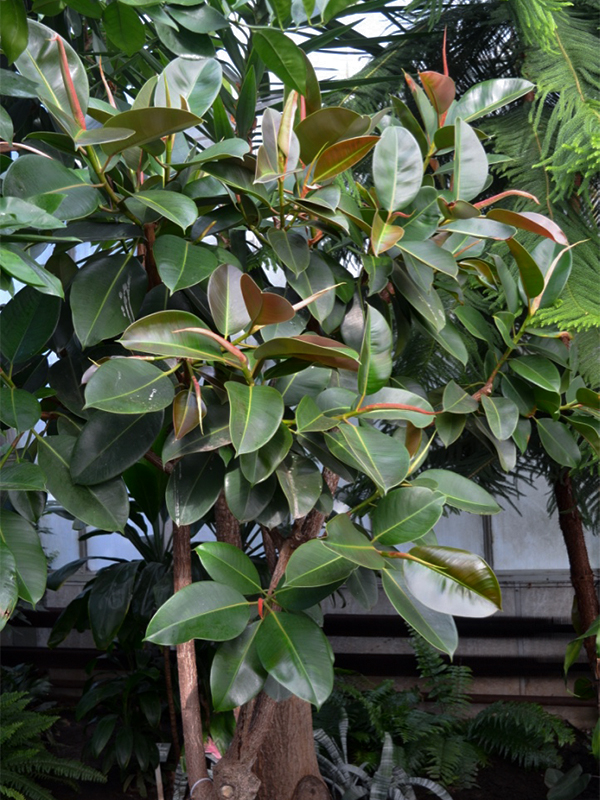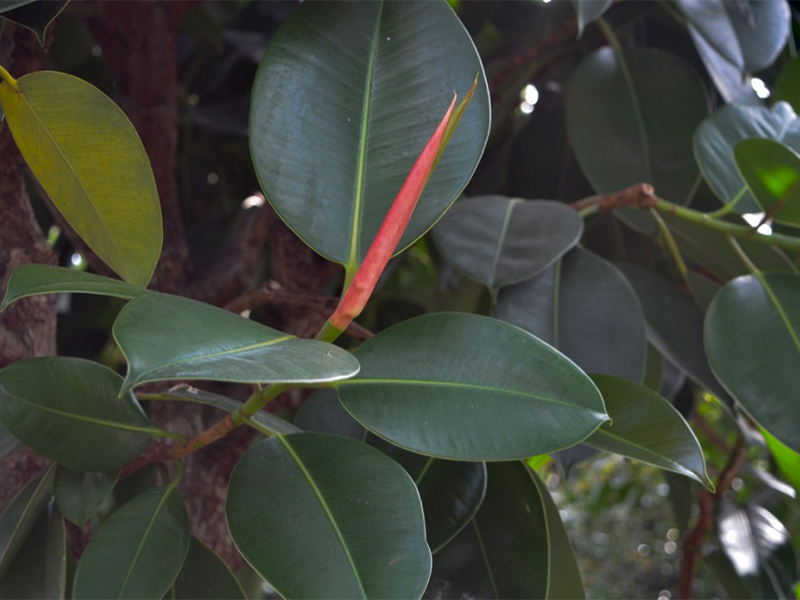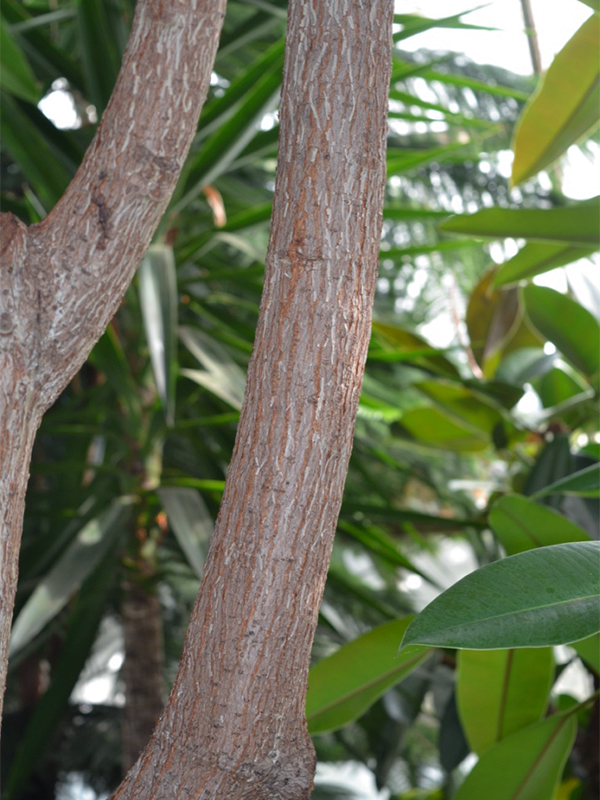| Shape | Upright and erect. |
| Landscape | In the landscape, rubbertrees become large wide spreading shade trees. They send down aerial roots that penetrate the soil, become woody and eventually form a trunk. Those grown as interior plants remain a manageable size due to container root restriction. |
| Propagation | By cuttings. |
| Cultivation | Best grown in partial to full shade in organically rich, well-drained soil. Allow soil to dry between watering. |
| Pests | Mealybugs, scale, and mites. |
| Notable Specimens | The Queen Sirikit Botanical Garden, Chang Mai., Thailand. Centennial Conservatory, Thunder Bay, Ontario, Canada. |
| Habitat | Horticultural origin. |
| Leaf Description | Large, thick, oval leaves. |
| Flower Description | Non-flowering. |
| Colour Description | Leaves are dark green, with newly emerging leaves a striking red. |
| Texture Description | Leaves are glossy and leathery. |


